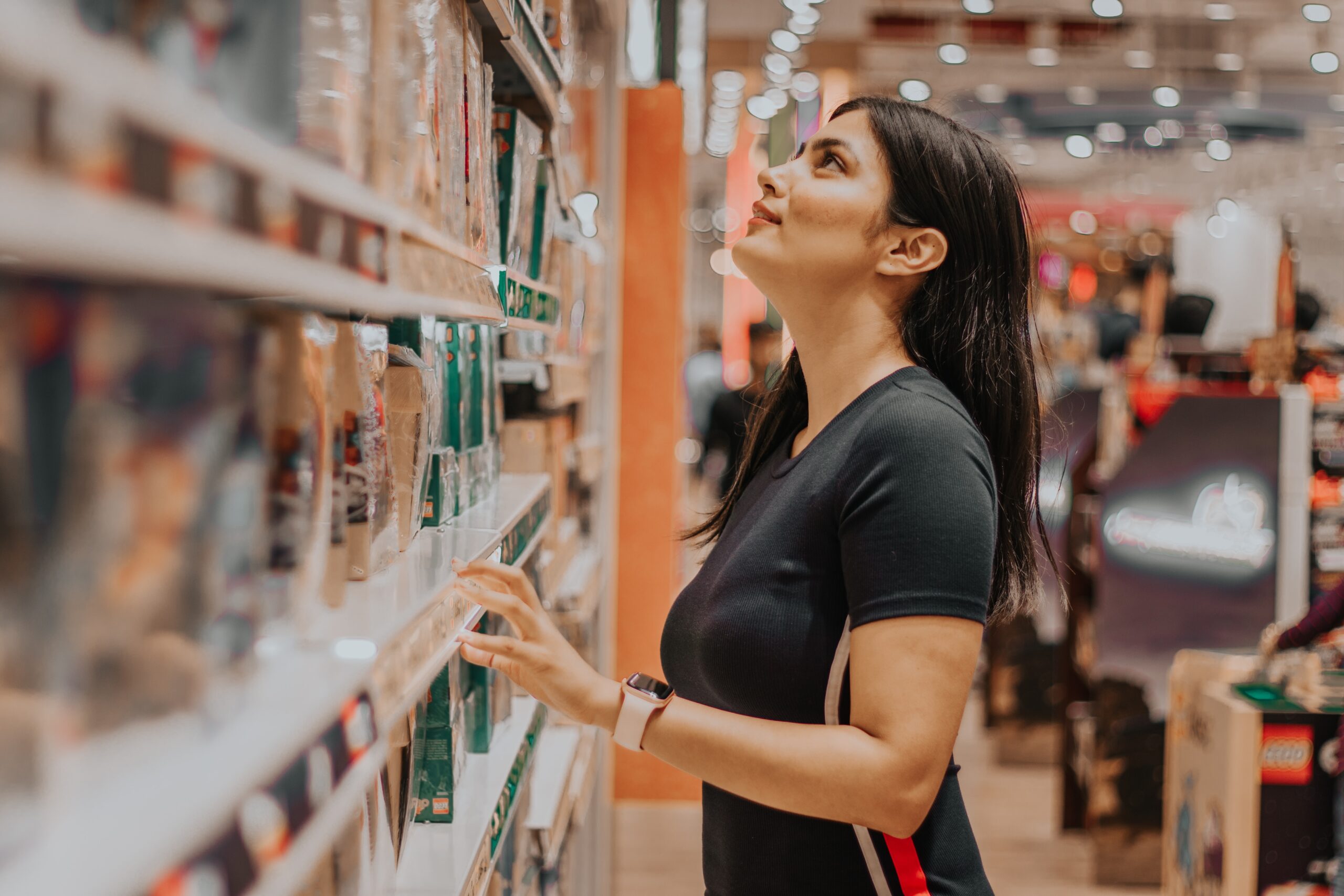With the unfortunate circumstances surrounding House of Fraser and Debenhams, not long after British Home Stores disappeared from the high streets the giants of retailing are falling.
Has the high street kept up with the expectations of the modern customer? This means making itself more relevant and attractive than other channels. At best retail will be part of our shopping experience, but indications are that many are being sacrificed as online retailers take a bigger slice of the retail pie.
A couple of recent retail experiences demonstrate to me how old cost-reduction models are still dominating the high street. Whilst online retailers use the assets they have to develop technology which fulfils customer requirements. See if you can spot the future of retailing from these three examples:
ASOS – Search and select outfits capability
You see an item someone in a magazine or on the high street is wearing and you think ‘I like that, where did they get it?’. You snap it and load it up on your ASOS app. They then search (using their trickery magic) and select a match or similar-looking items for you. Easy and a ‘go to’ option for any impromptu clothes shopping.

Next turn away sales to save employee effort
I haven’t been in Next for so long, but I was passing and saw a 50% sale poster outside. I popped in and my eye was drawn to a dress shirt wrapped in its packaging. I am never quite sure what size I am, so wanted to try it first. The pattern was very colourful and just what I wanted, but I again wanted to see what it looked like on.
I headed to the changing room with the shirt and a pair of trousers I liked the look of. I hadn’t meant to pick up the trousers, they sort of jumped into my arms on the way to the changing rooms. I didn’t think they’d look any good but thought I’d try them on anyway.
At the changing room, the member of staff took my shirt off me, asked my collar size and gave me a cream, silky shirt in my collar size. I looked confused so the changing room manager told me the problem was that people get the shirts out, they can’t put them away properly so have to hang them up and then people don’t buy them because they are not in packaging. I meant to get a picture of the ‘prison shirt’ at this point, but was so gobsmacked I forgot. For some reason I went along with this and tried the garment others used (I didn’t think about that at the time) on – it didn’t even fit. I took it off and headed to the till with just the trousers which I didn’t think would fit, but once I tried I realised did.
At the till, I explained the shirt didn’t fit. To which he replied, “Well not all shirts are the same cut”. So, what was the point of the charade of the ‘trial shirt’! I asked if I bought the shirt and took it home to try it on and it didn’t fit could I bring it back? “Of Course”. So I asked, why do I need to come here anymore? He just smiled knowingly. I left, unlikely to ever need to return.
So I’ll shop from home now. The only problem being when I am in their store, they have my attention but when I am at home, I never think of them and always default to ASOS.
Argos reduce store size, and the customer base with it
In the town I live, like many others, Argos has shed its retail footprint skin and become incubated within the Sainsbury’s supermarket. I needed a laptop case and thought of Argos. Having seen the shop moved I headed to Sainsbury’s. I found a small corner of the store with Argos tablets and a counter which was stacked full of goods behind it. It reminded me of Screwfix or The Tool Station. The grand stacking and conveyor belt set-up, which I always felt was quaintly Generation Game-like, had gone.

I punched my request on the keypad and a perfect laptop case came up. I requested to buy it but it was out of stock. I paused and thought I could never remember EVER going into an Argos and them not having the item in stock. The option was to have it delivered at home, despite the fact I was in store. I reluctantly agreed and was asked to go to the front desk/till to pay. The member of staff then punched my order in asking all the questions I’d given the tablet and more to arrive at the answer, ‘we don’t have it in stock’. I replied that I knew this and could he order it to be sent to my home. He explained further, that they didn’t have it in stock at all locally, ‘we don’t hold as much now’. Really? I would never have guessed!
I concluded that the transfer into the supermarket space had both reduced stock space and required new, yet to be compatible stock management systems.
I asked what I do now. He helpfully explained I could go back to tablet I used before, and when it told me to pay, he would then check again and tell me if it was in at all. I asked whether it would be quicker to go home and order, to which he said they’d probably see a wider national coverage of stock and it may be available somewhere in the country.
So my conclusion was that by visiting the new store it made it clear I would be wise ordering online from home from Argos. The challenge is, when I’m in the store, Argos don’t have to compete with Amazon and they have my business. When I am at home, I never think of them and always default to Amazon.
Retail CX revolution
These experiences tell me two key points:
- ASOS are going places (alright I’m 18 years behind the curve here) and being a customer will be a fun and engaging retail experience
- I am now an inconvenience to Argos and Next because I wanted to use the advantage of their retail set-up.
If retailers want to outlast their digital cousins, they need to update their mindset and then their CX, because they are making it ‘less painful’ to shop online. Online retailers only need to set up and fulfil the basics and they look streets ahead (pardon the pun).
Here’s hoping the best practice lessons from other service-based sectors with human interaction can be carried over to retailers, before they become completely irrelevant to us all.


